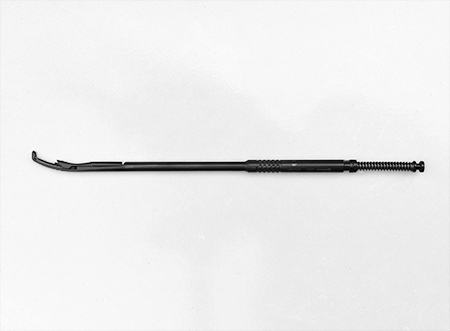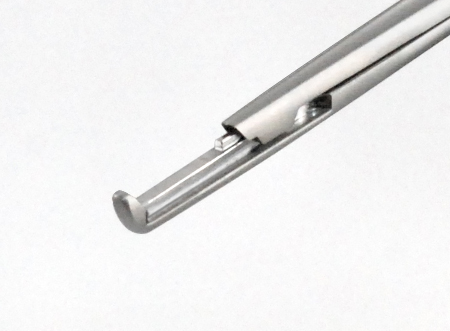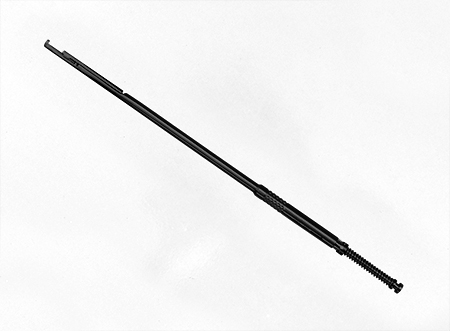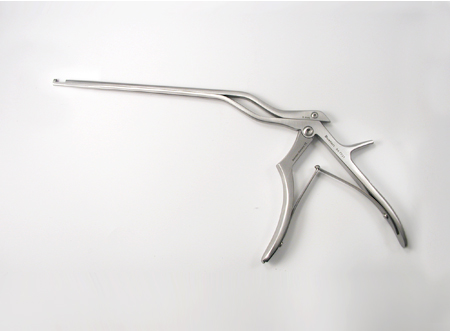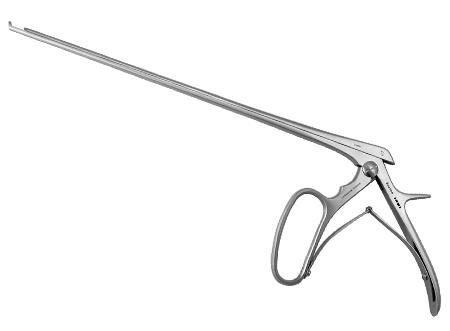-
Hand and Foot
- Small Bone
- Rongeur
- Bone Clamps
- Bone Spreader
- Wire Forceps
- Wire Cutters
- Elevators
- Raspatories
- Files
- Rasps
- Curettes
- Osteotomes
- Awls & Drill
- Bone Packers
- Mallet
- Soft Tissue
- Scissors
- Self Retaining Retractors
- • Small Frame Alm
- • Heiss
- • Deep Weitlaner Retractors
- • Distal Radius Fracture Retractors
- Hand-held Retractors
- Hooks and Rakes
- Forceps
- Hemostats
- Needleholders
- Tourniquet
-
Shoulder
- Soft Tissue Retraction
- Kölbel Retractor System
- • Kölbel Retractor
- • Modified Kölbel Retractor
- • Mini Open Retractor
- • Modified Mini Open Retractor
- • Rack & Pinion Retractor
- • Modified Rack & Pinion Retractor
- • Mini Rack & Pinion Retractor
- • Retractor Blades
- • Upgrade Your Existing Retractor
- Primary Retractors
- • Self-Retaining Retractors
- • Hand-held Retractors
- Browne Deltoid Retractors
- Subscapularis Spreaders
- Elbow Retractors
- Bone + Suture Tools
- GREAT EXPOSURE™ Retractors
- Darrach Retractors
- Humeral Head Retractors
- • Fukuda Retractors
- • Carter Rowe Retractors
- • Skid Lever
- • Bhattman Retractor
- Glenoid Levers
- Hohmann Retractors
- Suture & Tissue Tools
- • Awls & Suture Passers with Shorter Handles
- • Awls & Suture Passers with Longer Handles
- • Transosseous Set
- • Tenaculums
- • Percussive Awl
- • Needle Holders
- Chisel Set
- Rongeurs
- Mallet
-
Spine
- Rongeurs
- Kerrison Rongeurs
- • Lumbar
- • Cervical
- • Deep Bite
- • Foraminotomy
- • Bayonet Shaft
- • Beatty/Bay
- • Ceramic
- • Take-A-Part
- • Kerrison Builder™
- IVD Rongeurs
- • Gruenwald
- • Peapod
- • Caspar
- • Weil-Blakesley
- • Bayonet IVD
- • Ferris Smith
- • Cloward
- • Extraordinary
- • Curved Ferris Smith
- • IVD Builder™
- Double Action
- • Leksells
- • Stille
- • Smith-Peterson
- • Extended Length
- • Skull Base
- • Mainz
- Retractors + Elevators
- Tissue Retractors
- • Hand Held
- • Retractor Systems
- • Retractor w/ bilateral blades
- • Retractor w/ unilateral blade
- Spreaders and Distractors
- • Caspar Distractor system
- • Straight Lamina Spreader
- • Bayonet Lamina Spreaders
- • Curved Lamina Spreaders
- • Cloward Cervical Spreaders
- • Classic Cervical Spreader
- Nerve Retractors
- • Love Retractor, Bayonet
- • Love Hook, 5 mm
- • Love Hook, 3 mm
- • Scoville Hook
- • Holsher Root Retractor
- • Dandy Nerve Hook
- • Cushing Nerve Hooks
- • Murphy Probe
- Dissectors+Small Elevators
- Cobb Elevators
- • Short LP Handle
- • Knurled Metal Handle
- • Long LP Handle
- • Long/Long LP Handle
-
Knee and Hip Instruments
- Arthroscopic
- Microfracture Picks
- Nanofracture Picks
- Curettes
- • Cup Curettes
- • Ring Curettes (Pull)
- Rasps
- • Ring (Push+Pull)
- Probe
- Mallet
- Open Surgery
- Moreland Distractor
- Retractors/Elevators
- • Hip Retractors
- • Broad tipped Hohmanns
- • Narrow Tipped Hohmanns
- • Osmani Retractor
- Cobb Elevators
- Clamps
- Grasping Rongeurs
- Mallets
- Log In
-
News ArticleLessons from the Past: Inspirations Sprung from a WindowFor all the whimsical cause-and-effects that James Burke (famed for his BBC /PBS television series, Connections) has managed to lace together in his entertaining but convoluted perspective of history's significant events, I never understood why he missed the most compelling association of all: The Defenestration of Prague and the development of intervertebral disc (IVD) rongeurs.
History recalls that in 1618 a defiant group of outraged citizens threw two councilors out of the windows of Hradcany Castle and into the soft but humiliating dung-filled moat below. The citizens had been protesting the renege of religious freedom recently granted them by their King Ferdinand II. The human genome has a propensity to save and savor these seemingly lighter moments, but the brutal Thirty Years War this prank-like incident precipitated was, by any measure of civility, hardly a "light" affair. It is not so long a journey from Prague to the area surrounding the tiny Teutonic town of Tuttlingen, where nobler outcomes from that fateful event can be articulated in the mechanical (and subsequently, surgical) sense thanks to the due diligence of hard working, and less politically motivated individuals. In these little lost emerald valleys, where modern-day remnants of medieval hamlets still cling tenaciously to steep, short hillsides or cluster like peeping chicks under the watchful eye of turreted manors, the glorious Danube, of centuries old commerce and Viennese waltzes, is but a lazy meandering stream. Here a boy of 10 or 12 might easily be tempted to leap upon the mint green mane of an encroaching willow to sail across its bog-bound banks.
Here too, the tap, tap, tap of skilled surgical instrument craftsmen diligently working at their benches can be heard echoing through the hallucinative ears of a runaway imagination. The sounds may be far-fetched, but the craftsmen, their benches and the product of their profession are very real and omnipresent. For more than a century, surgical instruments of the finest quality have poured forth from this region as faithfully as the relentless flow of its resident river.
In recent years, leading shops in the area are abuzz with excitement over some of the newer design innovations in cup rongeurs for removing intervertebral body disc material. These instruments incorporate a remarkable blend of intricate craftsmanship with traditional design concepts. Honing the inner surfaces of upper and lower cups to fashion properly occluding edges capable of cutting cartilaginous material on initial contact requires exceptional skill. Placing four rows of 4 x 5 interdigitating teeth on the proximal, lateral edges of the cups to stabilize specimens to be excised adds further challenge to the daunting task of proper construction. To capture significant portions of tissue for removal with minimal shredding, jaws are hollowed, but neither the sharpest edges nor the perfect occlusion can overcome hydrostatic counter pressure induced by compressing the tissue within the confines of the hyperbolic cups. In these circumstances, the surgeon's efforts to achieve complete closure are thwarted.
Which brings us back to that nasty incident in Prague. Adopting the best of James Burke's reasoning it is this writer's opinion that designers turned slightly East and nearly four hundred years into history for innovation when fenestrations were added to these instruments as a means of releasing pent-up pressures by forcibly passing soft bodies through open windows.
Buxton's product line includes more than 50 versions of the Caspar-style IVD Rongeurs. One may start his or her collection from an offering of shaft lengths ranging from 140 mm through 300 mm. Another may choose by cup angle, in straight, up 30°, or down 30°. Still others might wish to begin one bite at a time, in 2 mm, 3 mm, 4 mm, 5 mm, and 6 mm cup sizes.
Talking Back, Vol. 2, No. 4
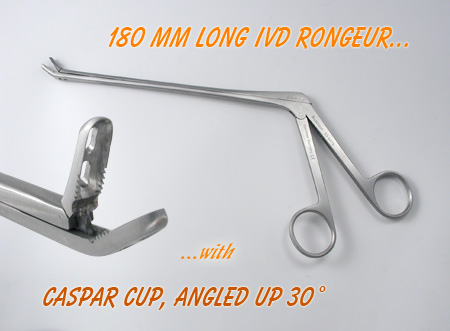
CasparIVDRongeur,up30°,180x6mm item# 83-6576Login To See PricesCaspar IVD Rongeur, up 30°, 180x6mm, fenestrated cups
•Standard IVD
•Double Fenestrated Cup with Teeth
•Up 30º
•180 mm Shaft LengthCopyright © 2025 Buxton BioMedical. • 11 Melanie Lane • East Hanover, NJ 07936 | Contact Us


